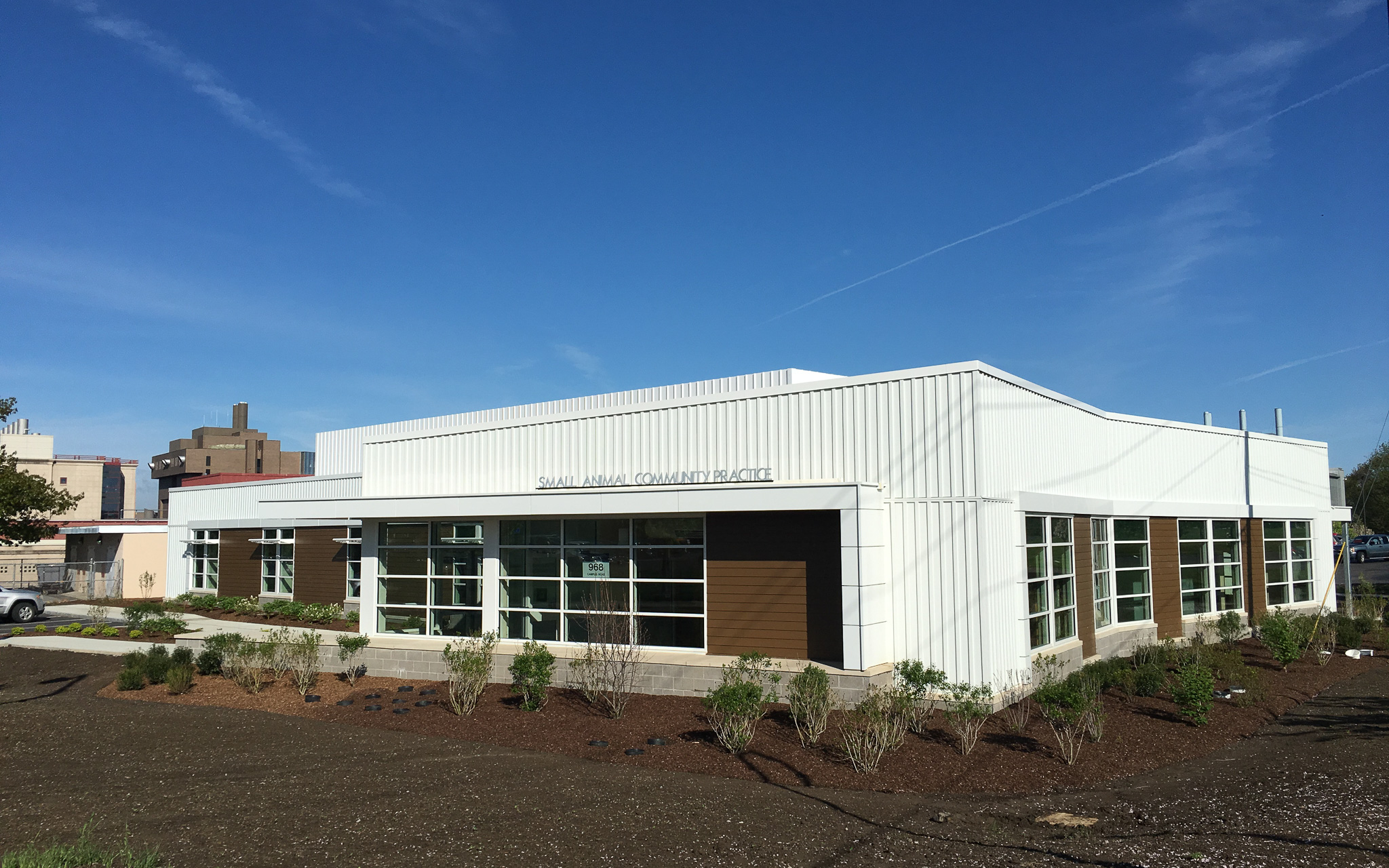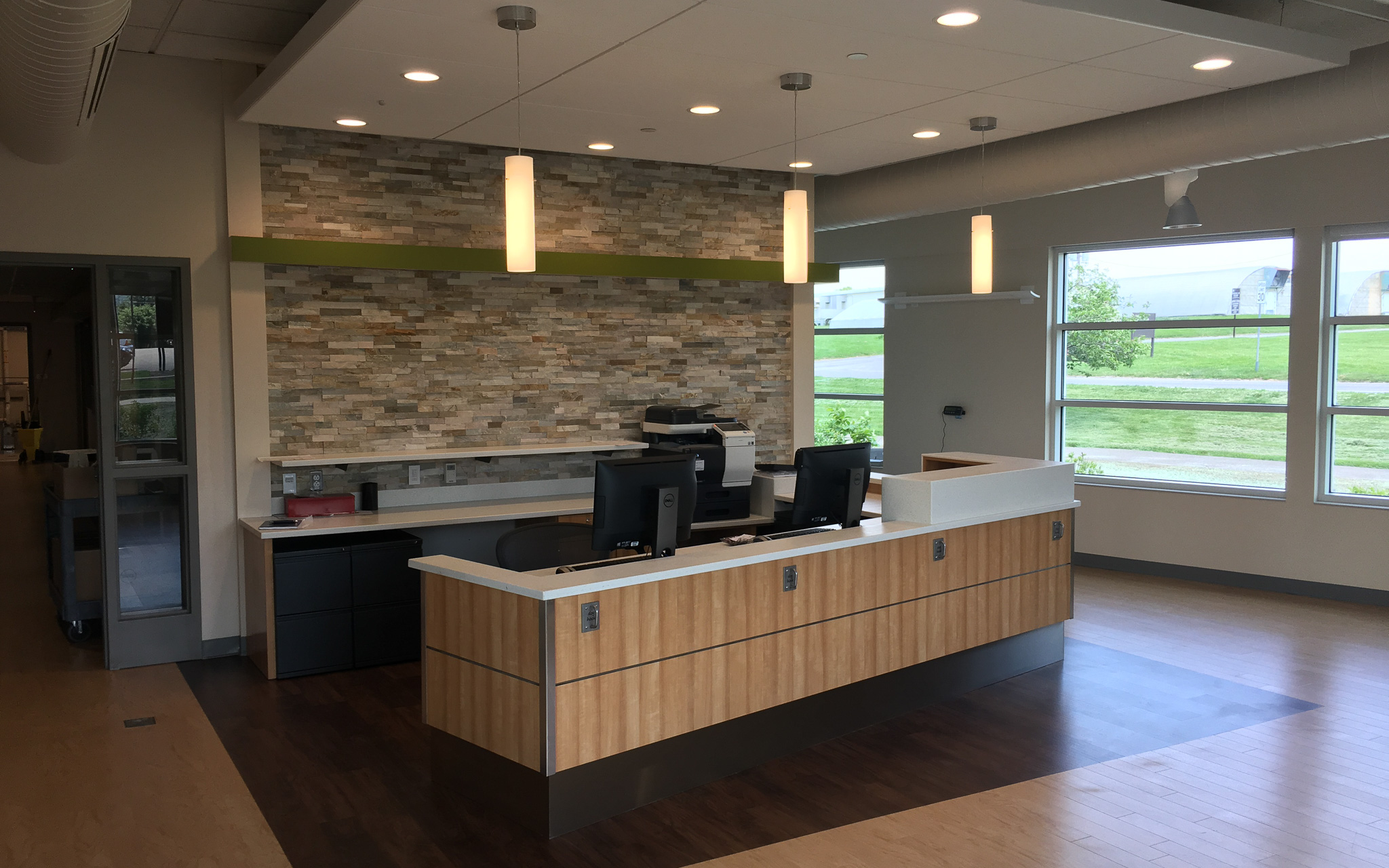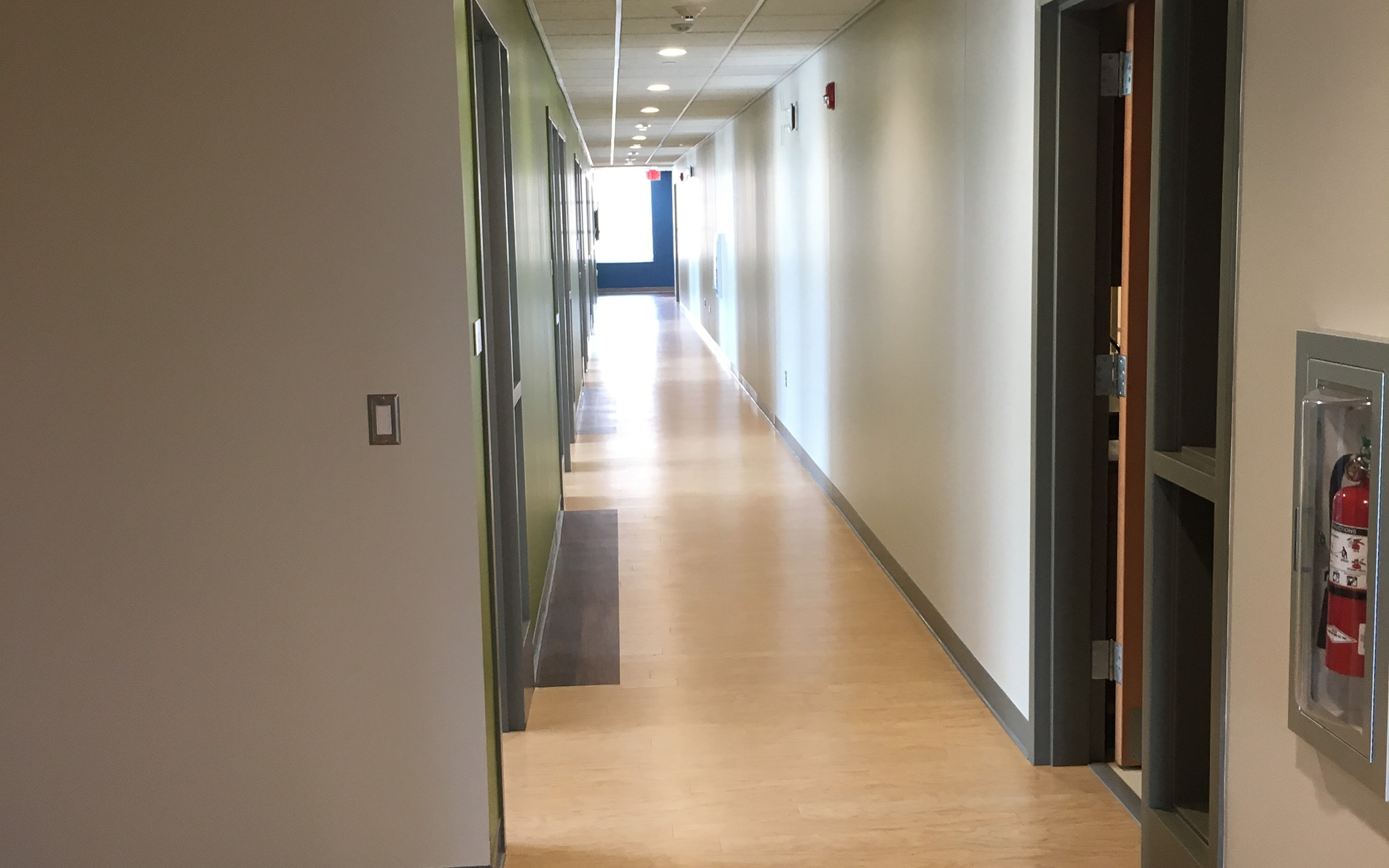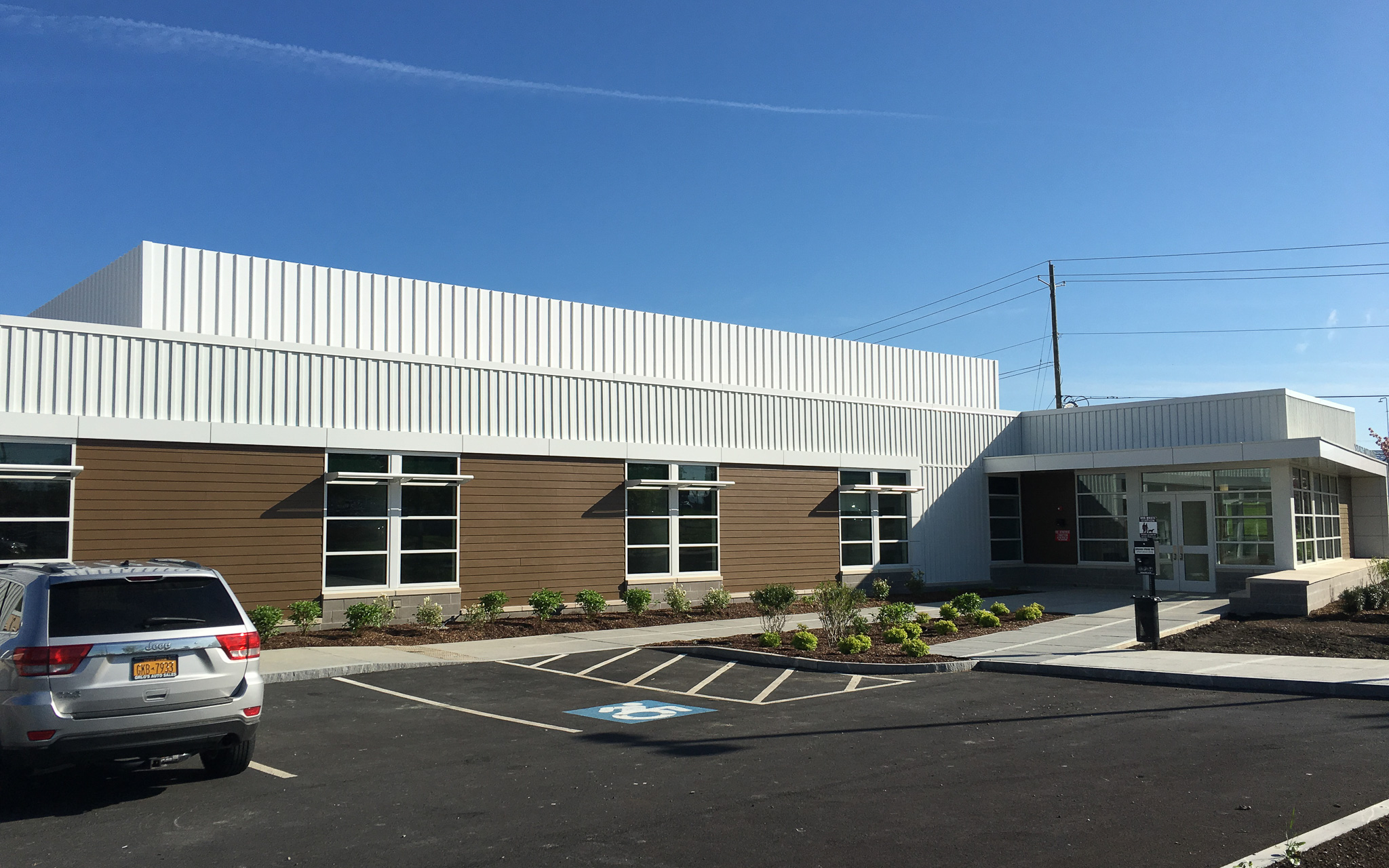
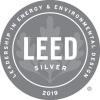 College of Veterinary Medicine-Small Animal Community Practice
College of Veterinary Medicine-Small Animal Community Practice
LEED Certified Silver
The goals of this project were to "provide occupants with an inspiring, healthy, and harmonious space" while also meeting LEED standards and assessing carbon reductions. The practice serves the local community with affordable primary care for their pets while giving Vet School students experience with vaccinations, spaying and neutering, parasite prevention, and basic lab testing. The LEED Silver building is energy- and water-efficient, showing levels far below average benchmarks. Among other features, the site was designed to control stormwater runoff and maximize sunlight for natural lighting, and landscaping was done with native plants that won't require watering in the Ithaca climate.
On the LEED-certified scorecard, College of Veterinary Medicine scored 51 out of 110 possible points. For a full breakdown, review the report on the US Green Buildings Certification (USGBC) website.
| Sustainable Sites | Water Efficiency | Energy & Atmosphere | Materials & Resources | Indoor Environmental Quality | Innovation & Design | Regional Priority | |
|---|---|---|---|---|---|---|---|
| Points Earned | 9 / 26 | 7 / 10 | 18 / 35 | 0 / 14 | 10 / 15 | 5 / 6 | 2 / 4 |
Project Highlights
- Previously, the site was home to an underutilized poultry facility. By repurposing the same land, this project avoided a new conversion of green space and replaced the facility with a useful and efficient space
- The clinic’s design offers water and energy use savings in a high-performance building, according to Kozlowski. The energy system operates 45% more efficiently and the low-flow plumbing fixtures reduce water usage by one-third compared with similar buildings
- The entirety of the roof surface has a Solar Reflectance Index that meets the credit requirements, keeping the building cool inside by reflecting sunlight instead of absorbing it
- The daylight cycle was carefully incorporated into the design, allowing sunlight to reach deep within the building through interior windows, but using solar shades on south-facing windows to limit intense summer sunlight. These features increase natural light and help minimize heating and cooling needs
- Inside, the building follows a Green Cleaning Policy, addressing cleaning processes and chemicals, staff training, and occupant feedback
Check Out the Small Animal Community Practice
LEED®, and its related logo, is a trademark owned by the U.S. Green Building Council® and is used with permission.

